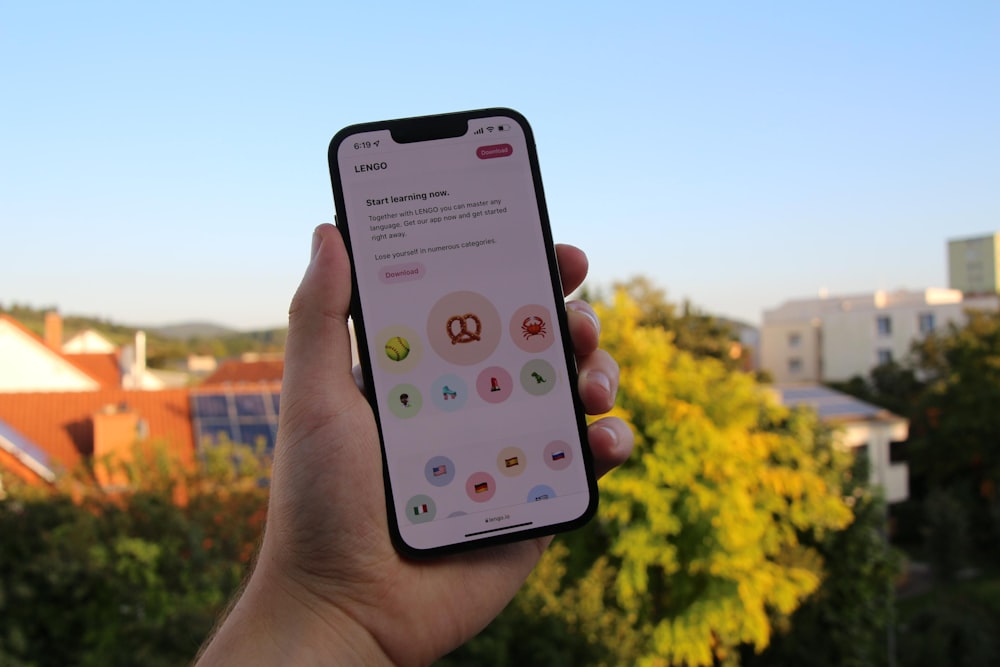The world of business is constantly evolving, and organizations have to be always on the lookout for innovative strategies to stay ahead of the competition. One such approach that has gained significant traction in recent years is gamification. As an engaging and interactive methodology, gamification has demonstrated its potential to not only enhance productivity and performance but also foster a positive work culture.
Gamification, at its core, refers to the integration of game mechanics and design principles into non-gaming environments, such as business processes and workplace activities. This transformative approach has proven its efficacy across various industries by promoting customer and employee engagement and yielding impressive results.
In this article, we will delve into the multifaceted realm of business-oriented gamification, providing valuable insights into its benefits, applications, and best practices worth considering. Read on to explore how gamification can revolutionize your organization by ensuring a thriving and motivated workforce.
The Science Behind Gamification
Gamification draws upon various fields, such as cognitive psychology, behavioral economics, and human-computer interaction, to create experiences that engage and motivate users. It leverages the brain’s reward system by triggering the release of dopamine, a neurotransmitter associated with pleasure and motivation. This drives individuals to seek out more rewarding experiences and achieve their goals.
In addition to fostering intrinsic motivation, gamification also taps into extrinsic motivators such as competition, social recognition, and tangible rewards. By providing immediate feedback through points, badges, or progress bars, employees can gauge their performance in real time and adjust their efforts accordingly.
Furthermore, incorporating elements of storytelling and narrative can enhance the emotional connection to the task at hand, making it more meaningful and enjoyable.
Advantages of Implementing Gamification in Businesses
When implemented effectively, gamification can create a ripple effect of benefits throughout an organization:
Improved Productivity and Performance
A motivated workforce is more likely to be proactive, take the initiative, and invest effort in their tasks. Gamification encourages employees to push their boundaries and reach their full potential.
Enhanced Collaboration and Teamwork
Gamification fosters a sense of shared purpose and interdependence among team members, promoting cooperation and collaboration. Utilizing team-based challenges or group-based problem-solving exercises can strengthen relationships and teamwork.
Greater Employee Satisfaction and Retention
Engaged employees are typically happier in their roles, leading to increased job satisfaction and reduced turnover rates. Gamification helps build a positive work environment that attracts and retains top talent – a key competitive advantage that should not be overlooked.
More Innovative and Agile Workforce
Gamification encourages creative thinking, problem-solving, and adaptability as employees strive for continuous improvement. Rewarding innovation helps organizations create a culture that embraces change and drives growth.
Streamlined Business Processes
Gamified workflows can help identify bottlenecks, inefficiencies, or areas for optimization. By incentivizing process improvements, organizations can increase overall efficiency and effectiveness.

Although implementing gamification on your own is definitely doable, it’s much easier to rely on external gamification platforms like Aribo that come with pre-built features designed to save you a lot of time and money.
Aribo is a highly versatile solution that provides everything you need to get started with gamification – including a mobile app that your employee players can use and a website to create and manage your gamified campaigns.
Key Elements of Successful Gamification
Designing an effective gamification strategy or system that can be incorporated into a business is a rather complex task that requires careful planning. A few key elements must be considered to ensure that the system is impactful, engaging, and suitable for your organization’s needs.
Clear Objectives and Measurable Outcomes
Establish specific goals for the gamification initiative and identify key performance indicators (KPIs) to measure success. Clearly defined objectives provide employees with a sense of direction and purpose.
Alignment with Business Goals and Values
The gamification system should reflect and reinforce the organization’s mission, vision, and values. This alignment ensures that the gamified experience supports the company’s strategic objectives.
Balance Between Challenge and Reward
Design tasks that are challenging but achievable, with appropriate rewards, to maintain employee motivation without causing burnout. A balanced reward system can create an engaging and satisfying experience that keeps employees motivated over the long term.
Social Interaction and Community Building
Encourage communication, collaboration, and friendly competition among employees to foster a sense of belonging and camaraderie. Creating a supportive community is an important aspect of successful gamification – it is essential for users to feel connected to others in order to stay engaged.
Gamification Strategies for Employee Engagement
There are numerous ways to incorporate gamification into the workplace to drive employee engagement:
- Personalized onboarding experiences: Tailor the new hire orientation process by incorporating gamification elements specifically made to individual preferences and learning styles.
- Goal-based rewards systems: Set short-term and long-term goals for employees, offering incentives for reaching milestones or surpassing expectations.
- Healthy competition through leaderboards and team challenges: Use leaderboards to showcase top performers, creating a sense of friendly rivalry while encouraging others to strive for improvement.
- Recognition of achievements: Acknowledge accomplishments with badges, certificates, or tangible rewards as a form of positive reinforcement.
- Collaborative work environment: Facilitate cooperation through team-based activities or problem-solving exercises that require a collective effort.

Boosting Sales Performance Through Gamification
The aim of virtually any business is to increase sales and drive revenue growth, but this can be a challenge in itself. After all, the sales process is often complex, and your sales team may be up against the stiff competition. In such cases, using gamification can provide a necessary boost to the performance of your employees.
Setting Individual or Team Sales Goals
Establish targets based on historical data or desired outcomes, offering tiered rewards for different levels of achievement. This approach motivates sales representatives to consistently strive for higher performance.
Tracking Performance Metrics
Use leaderboards or dashboards to display key sales metrics, fostering transparency and accountability. When employees can visualize their progress, they are more likely to stay focused on achieving their goals.
Incentivizing Skill Development
Offer incentives for completing training modules or acquiring new skills relevant to the sales process. Encouraging professional growth can lead to a more knowledgeable and effective sales force.
Encouraging Cross-selling or Upselling
Design targeted challenges that encourage sales representatives to propose additional products or services to customers when appropriate. Gamification can help reinforce the value of these selling techniques, resulting in increased revenue.
Enhancing Learning and Development With Game-Based Solutions
Your employees are your most valuable asset, so it is essential to invest in their development and growth. Learning and development programs that incorporate game-based solutions can be an effective way to engage employees and promote skill development.
Some of the more interesting applications of gamification in workplace learning and development include:
Scenario-Based Simulations
Create immersive simulations that replicate real-world challenges, encouraging critical thinking and decision-making skills. These simulations can provide valuable hands-on experience without exposing the organization to potential risks.
Interactive Quizzes and Assessments
Design quizzes, tests, or puzzles that require users to apply their knowledge in engaging ways, reinforcing learning concepts. Interactive assessments can also provide immediate feedback, enabling learners to identify areas for improvement.
Progress Tracking and Immediate Feedback
Implement systems that track user progress and provide instant feedback. This approach allows learners to understand their strengths and weaknesses while promoting a culture of continuous improvement.
Collaborative Learning Activities
Encourage peer-to-peer learning and knowledge sharing through group exercises or projects. Collaboration fosters a deeper understanding of the material and helps employees build valuable interpersonal skills.
Gamification in Business World: Real-World Examples

Many organizations across various industries have successfully incorporated gamification into their business strategies, yielding impressive results in terms of employee engagement, customer loyalty and satisfaction, and revenue growth. Here are some notable examples of gamification that showcase the power and versatility of this fascinating approach:
Fitbit
Fitbit revolutionized the fitness tracking industry by gamifying personal health and wellness. By incorporating elements like daily step goals, friendly competitions with other users through challenges, badges for achievements, and progress tracking over time, Fitbit has created an engaging and motivational experience for its users.
This approach has not only spurred user adoption but also led to the formation of online communities where users share their fitness journeys and support one another in achieving their health goals.
Duolingo
As one of the prime examples of gamification, Duolingo’s innovative approach to language learning involves gamifying the entire learning process. The platform offers bite-sized lessons combined with quizzes and interactive exercises that engage users through a reward system of points, levels, and leaderboards.
By making learning enjoyable and accessible, Duolingo has attracted over half a billion users worldwide who can learn languages at their own pace while having fun.
Starbucks
The Starbucks Rewards loyalty program is an excellent example of how gamification can build customer loyalty and customer engagement. Members of the program earn stars for every purchase they make, which can later be redeemed for free food items or discounts.
Additionally, the Starbucks app offers personalized challenges and bonus star opportunities tailored to individual customers’ preferences, encouraging continued participation and repeat business.
HP Uni
HP, one of the biggest tech corporations in the world, recognized the potential of gamification in sales training and implemented a game-enabled learning platform called HP Uni. The platform engages sales representatives through game elements such as missions, badges, and leaderboards while providing them with essential product knowledge training.
As a result of this engaging approach, HP experienced increased sales performance and improved knowledge retention among its sales teams.
M&M’s Eye-Spy Pretzel Campaign
M&M successfully leveraged gamification in one of its marketing campaigns designed to launch its pretzel-flavored candies. The brand created a simple yet fun game where users had to find a hidden pretzel in an image filled with M&M’s characters. This interactive and entertaining campaign generated significant buzz on social media, resulting in increased brand awareness and product sales.
These real-world examples demonstrate the transformative potential of gamification when applied thoughtfully across various business functions. By incorporating game mechanics and design principles into their strategies, organizations can create engaging experiences that boost employee and customer satisfaction, ultimately driving growth and innovation.
Conclusion
Gamification is a powerful tool that can be leveraged to achieve a variety of business objectives. When designed and implemented correctly, it can result in increased employee productivity, performance, satisfaction, and retention. Additionally, gamification can help organizations become more agile and innovative as they strive for continuous improvement. Gamified systems can also serve to increase customer engagement or even enhance customer loyalty programs if implemented correctly.
While there are many advantages to incorporating gamification into the workplace, it is important to keep in mind that not all games are created equal.
In order to be successful, businesses must carefully consider their goals and objectives, target audience, and company culture. With these factors in mind, they can design gamification systems that are impactful, engaging, and aligned with their business goals.
It might seem hard, but as the examples of Fitbit, Duolingo, Starbucks, HP, and M&M’s demonstrate, it is possible to successfully implement gamification strategies across various industries and reap the benefits of motivated and engaged employees and customers. If these companies could do it, so can you! Good luck with your gamification efforts!
And don’t forget to check out the Aribo platform if you want to get started with gamification right away. With a wide range of industry-leading features and tools, Aribo can help you create meaningful and engaging experiences that drive employee and customer engagement – a key competitive advantage in today’s business world. Choose Aribo today and game your way to success!
